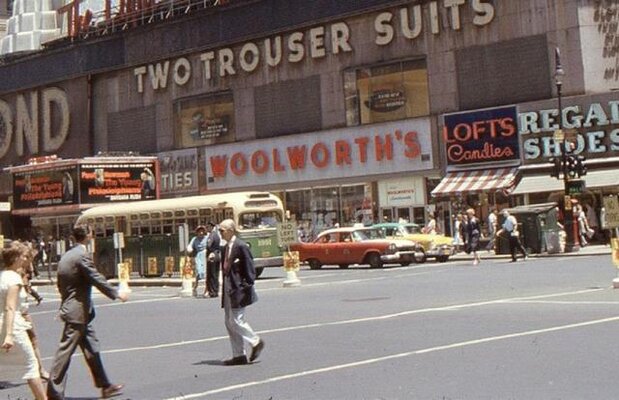- Joined
- Feb 8, 1999
- Messages
- 18,425
- Real Name
- Robert Harris
This is an interesting one, which points out the absolute necessity (if one cares about reproduction quality) of a properly calibrated system.
In additon, we're still not fully out of the woods with OLED flat panels, which have changed recently, allowing for a bit more control over HDR and Dolby Vision.
While the glass for the Sony as well as the LG is all made by LG, the Sony has different electronics, leading to different results.
The most recent panels play more nicely with Dolby Vision than mine, which is a first gen. The new Sony A90J takes things into new territory, and I'll be experimenting with both MFL as well as Lawrence on that model, to see precisely how things have changed.
After viewing MFL in streaming in 4k, I had genuine concerns as to how that data would appear when pressed to a disc, and after now spending some quality time in both projection as well as via OLED, I've come away very pleased.
Whatever anomalies I was seeing in streaming - my data throughput in 900+ - did not appear on disc.
Color is accurately represented, and Dolby Vision and HDR, which seemed a bit on the heavy side, affecting the air just below black are far better via 4k disc.
But even with high data throughput, the difference between the lovely Blu-ray, and the new 4k - yes, it's four times the amount of real data - is astonishing.
As to black levels, I found it necessary to do some slight tweaking on the OLED, but eventually things fell into place. Which leads me to believe that on the A90J, things will only get better.
Setup - both of one's player as well as panel are extremely important, as black levels on this film ride the edge of a razor blade, and reached perfection due to the endeavors of Fotokem's brilliant colorist Mark Griffith, who was able to perfectly mold the desires of a slightly batty archivist into data perfection.
I'll not go into the storyline. Suffice to say that it's about two older gentlemen who take an interest in a young woman, training her to fit their needs, based upon a bet.
Audio, which was harvested from the original 1964 six-track full-coat masters (with the exception of one reel) has been captured and reproduced at 96k, which means that you're actually listening to a digital record of the studio masters.
Image is derived from 8k scans (down-razzed to 4k) from approximately 150 minutes of original 65mm negative and 21 minutes of 65mm black & white separation masters.
I defy viewers to tell the difference.
One of the finest musical motion pictures finally arrives on 4k Blu-ray, and demands to be a part of any serious cinema library, as it blows the HD Blu-ray out of the water.
Paramount's new 4k of MFL joins a tiny population of 4k UHD Blu-rays based upon files actually captured and reproduced in full 4k resolution. If anyone isn't clear regarding what that means, take a look at A24's 4k of Midsummar, captured in 8k on Panavision's new camera system.
Image – 5
Audio – 5 (Dolby 7.1 TrueHD)
Pass / Fail – Pass
Upgrade from Blu-ray - No comparison
Plays nicely with projectors - Yes
Very Highly Recommended
RAH
In additon, we're still not fully out of the woods with OLED flat panels, which have changed recently, allowing for a bit more control over HDR and Dolby Vision.
While the glass for the Sony as well as the LG is all made by LG, the Sony has different electronics, leading to different results.
The most recent panels play more nicely with Dolby Vision than mine, which is a first gen. The new Sony A90J takes things into new territory, and I'll be experimenting with both MFL as well as Lawrence on that model, to see precisely how things have changed.
After viewing MFL in streaming in 4k, I had genuine concerns as to how that data would appear when pressed to a disc, and after now spending some quality time in both projection as well as via OLED, I've come away very pleased.
Whatever anomalies I was seeing in streaming - my data throughput in 900+ - did not appear on disc.
Color is accurately represented, and Dolby Vision and HDR, which seemed a bit on the heavy side, affecting the air just below black are far better via 4k disc.
But even with high data throughput, the difference between the lovely Blu-ray, and the new 4k - yes, it's four times the amount of real data - is astonishing.
As to black levels, I found it necessary to do some slight tweaking on the OLED, but eventually things fell into place. Which leads me to believe that on the A90J, things will only get better.
Setup - both of one's player as well as panel are extremely important, as black levels on this film ride the edge of a razor blade, and reached perfection due to the endeavors of Fotokem's brilliant colorist Mark Griffith, who was able to perfectly mold the desires of a slightly batty archivist into data perfection.
I'll not go into the storyline. Suffice to say that it's about two older gentlemen who take an interest in a young woman, training her to fit their needs, based upon a bet.
Audio, which was harvested from the original 1964 six-track full-coat masters (with the exception of one reel) has been captured and reproduced at 96k, which means that you're actually listening to a digital record of the studio masters.
Image is derived from 8k scans (down-razzed to 4k) from approximately 150 minutes of original 65mm negative and 21 minutes of 65mm black & white separation masters.
I defy viewers to tell the difference.
One of the finest musical motion pictures finally arrives on 4k Blu-ray, and demands to be a part of any serious cinema library, as it blows the HD Blu-ray out of the water.
Paramount's new 4k of MFL joins a tiny population of 4k UHD Blu-rays based upon files actually captured and reproduced in full 4k resolution. If anyone isn't clear regarding what that means, take a look at A24's 4k of Midsummar, captured in 8k on Panavision's new camera system.
Image – 5
Audio – 5 (Dolby 7.1 TrueHD)
Pass / Fail – Pass
Upgrade from Blu-ray - No comparison
Plays nicely with projectors - Yes
Very Highly Recommended
RAH
Last edited:






